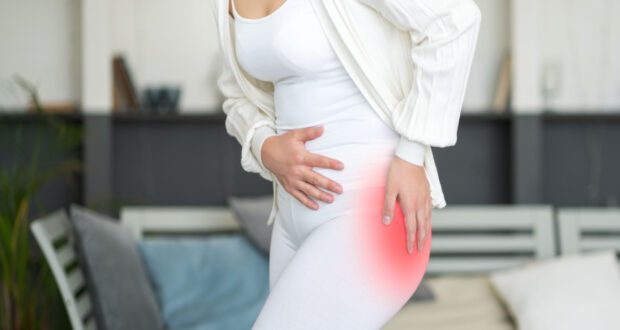By: Red Hot Mamas
Published: June 8, 2022
Written by Karen Giblin
As women we differ from in our susceptibility to illness. Musculoskeletal pain may increase during perimenopause and continue through our postmenopausal years. It is important for you to see your doctor if you find yourself suddenly waking up in the morning feeling stiff and creaky. Or, if you have stiffness after moving the joint after rest, a creaking sound when moving the affected joint, a decreased range of movement in the joint, or even the joint feeling as if it could give away suddenly. These could be signs of osteoarthritis.
Osteoarthritis (OA) is the most common form of arthritis. Some people call it degenerative joint disease or “wear and tear” arthritis. It occurs most frequently in the hands, hips, and knees. It is a disorder of the joints and surrounding tissue between your bones.
OA affects over 32 million US adults. OA affects each person differently. Some people never get past the creaky sound when moving their joint. Others may get worse quickly. OA may develop after repeated overuse of a joint or because of stress of obesity and other risk factors.
So, let’s look at the risk factors for OA. They include:
- Age—The risk of developing OA increases with age. Cartilage and other joint structures tend to degrade and become weaker over time. After years of use, they may start to wear out. But fortunately, osteoarthritis isn’t inevitable as we age, but our chances of developing it do increase especially if you’re past age 45.
- Joint injury or overuse—Injury or overuse, such as knee bending and repetitive stress on a joint, can damage a joint and increase the risk of OA in that joint.
- Gender—Women are three times more likely to develop OA than men, especially after age 50. This may be due to smaller joint structures or some link to estrogen, but nothing has been proven yet.
- Obesity—Extra weight puts more stress on joints, particularly weight-bearing joints like the hips and knees. This stress increases the risk of OA in that joint. Obesity may also have metabolic effects that increase the risk of OA. For every ten pounds of excess weight you carry, you increase the force exerted on your joints.
- Genetics—People who have family members with OA are more likely to develop OA. People who have hand OA are more likely to develop knee OA.
- Race— Some Asian populations have lower risk for OA.
If you have symptoms or are concerned about your risk factors for developing OA, you should make an appointment with your doctor. Your doctor can devise a treatment program for you. With proper treatment, it may help your pain to diminish and help to keep joint degradation to be kept at a minimum.
But let’s not also forget the steps you can take to help yourself and don’t ignore the enormous potential you have to improve the quality of your life if you take some measures to do so.
You can keep OA at bay. Here are some simple measures you can take to relieve the symptoms of OA:
- Take a load off with weight control. By losing weight you may significantly reduce stress on your joints, particularly on your knees and hips. Try to maintain a healthy weight as this may slow the progression of OA.
- Get physically active. Experts recommend that adults engage in 150 minutes per week of at least moderate physical activity. Every minute of activity counts, and any activity is better than none. Moderate, low impact activities recommended include walking, swimming, or biking. For people who worry that physical activity may make OA worse or are unsure how to exercise safely, you might start out by asking your doctor to refer you to a physical therapist who can teach you some exercises that you can do on your own. Strengthening the muscles around your knee or back actually may help the pain associated with OA.
- Heating and cooling to take the pain away. Some people find heating pads, hot baths helpful. Others, prefer ice packs which can numb the area. When trying either of these measures, be sure to allow your skin time to return to its usual temperature before going about your usual daily routine.
There is no cure for OA, but there are ways to manage OA to minimize pain, continue physical activities, maintain a good quality of life and remain mobile.
Talk to your doctor so that you have a thorough understanding of osteoarthritis. Learn the warning signs and the causes of OA. Discuss the diagnosis and treatment options with your doctor for OA.
 Red Hot Mamas In Charge of Change.
Red Hot Mamas In Charge of Change.




